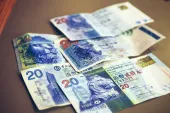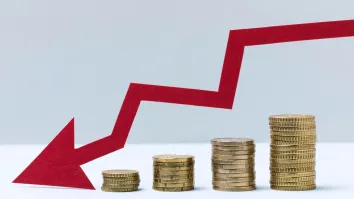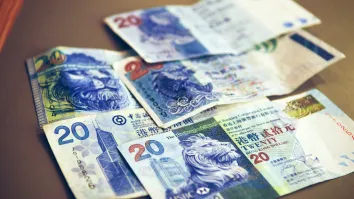
Korea’s central bank to hike up rates to 3.5% in August
HSBC says inflation will drift back down to the central bank’s target range of 2-4%.
However, core prices will continue to rise, reaching 3.7% y-o-y in June, the highest level since May 2009.
Here’s more from HSBC:
| With data tumbling all around us, you are forgiven for expecting the Bank of Korea to lay off rate hikes for a while. After all, the Korean economy remains driven by exports and thus highly exposed to developments elsewhere in the world economy. Weak jobs data in the US, for example, may signal slower shipments of cars and fancy electronics across the Pacific. But, the picture isn’t all that dire. In fact, local demand continues to hold up well, and the regional economy, above all China, should pick up steam again into year-end. Core prices, in fact, continue to climb, and interest rates remain well below neutral. The Bank of Korea has in the past stuck to its guns and tightened even in the face of wobbly demand. This time should be no different. But this week seems a little too early for officials to push rates higher again. Having delivered Still, with the policy rate below neutral, and core prices pushing higher, we continue to expect a hike this quarter. The tough part is in deciding between August and September. The former seems more likely at this stage, not least because the last meeting of the quarter occurs only a few days before Korea’s Chuseok holiday, the local version of Thanksgiving. The governor’s press conference will thus be especially pertinent this time around. At the last meeting, he already struck a hawkish tone. This week, the rhetoric will likely remain tough. Although the governor will likely acknowledge growth risks, especially in light of softer US data, we expect him to highlight the recent acceleration of core inflation, and still high household debt, which officials are keen to stop from rising, as reasons for the central bank to maintain a tightening bias. Note that the Minister of Finance also recently commented about the risk of elevated inflation. In sum, we stick to our guns and continue to pencil in a 25bp hike this quarter and another one for the fourth quarter. That will bring the policy rate to 4% by the end of the year, which, by our estimates, is still below neutral at 4.3%. It’s just so sticky These effects should soon fade out of the data and, along with the decline in global oil prices, should see headline inflation drift back down into the central bank’s target range of 2-4%. However, and more worryingly, core prices continue to rise, reaching 3.7% y-o-y in June, the highest level since May 2009. Over the past three months, core prices rose 4.5% saar, which is decidedly too fast for comfort and reflects not only second-round effects from higher commodity prices earlier in the year, but also demand pull effects, which are of concern to the central bank. Assuming that both headline and core inflation revert to their historical sequential trend, base effects will pull both measures back into more moderate territory over the coming months. While this seems likely for headline, which the Bank of Korea targets, it is less certain for core inflation. One reason to remain concerned is the elevated level of inflation expectations, which rose again in June. This suggests that second round effects have not yet fully fed through the economy. Moreover, a relatively tight labour market, buoyant domestic demand, and limited excess capacity will likely sustain underlying price pressures. |
Photo from: Gaussian21



















 Advertise
Advertise






